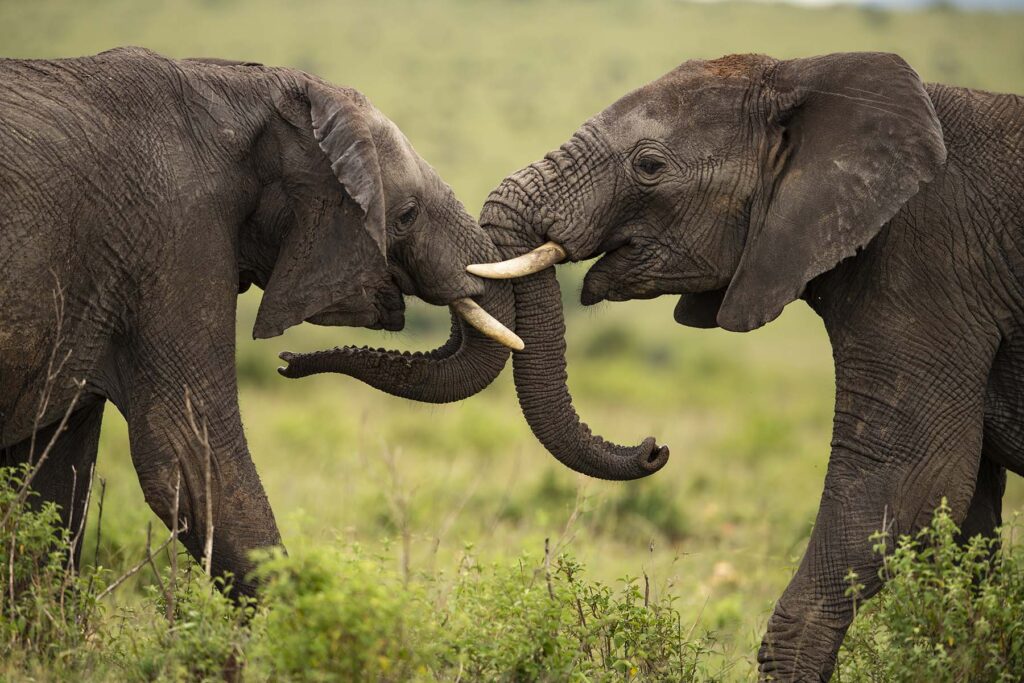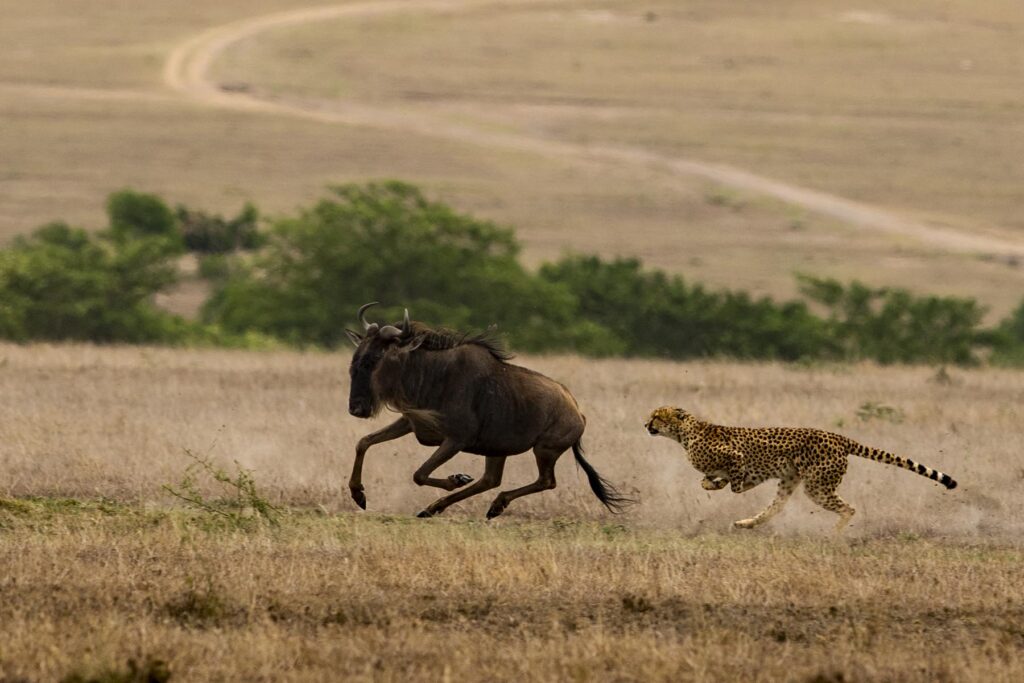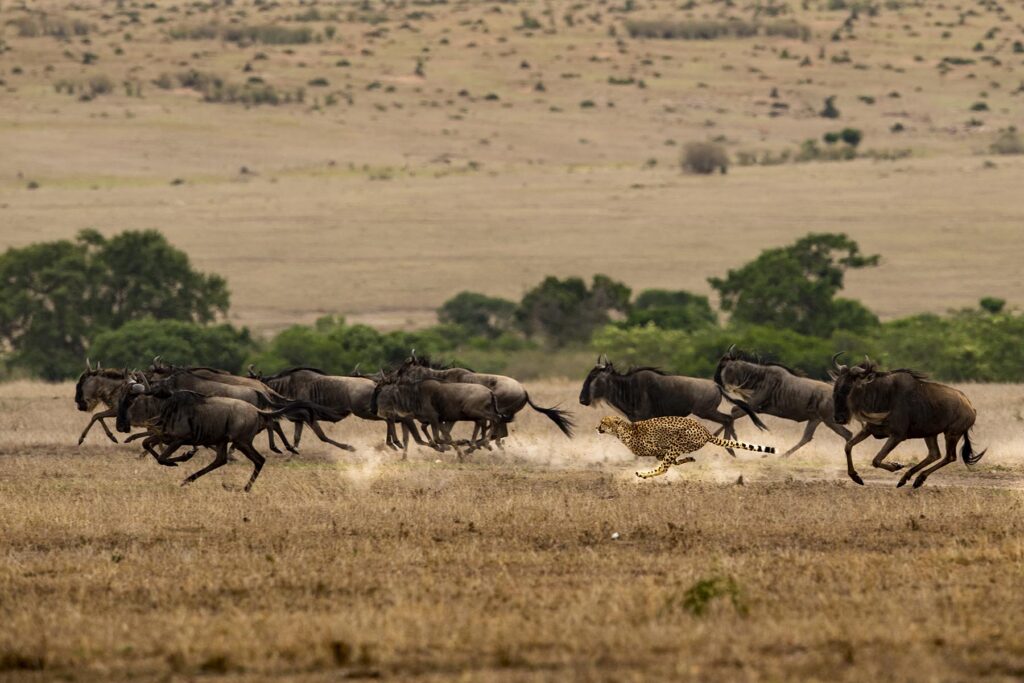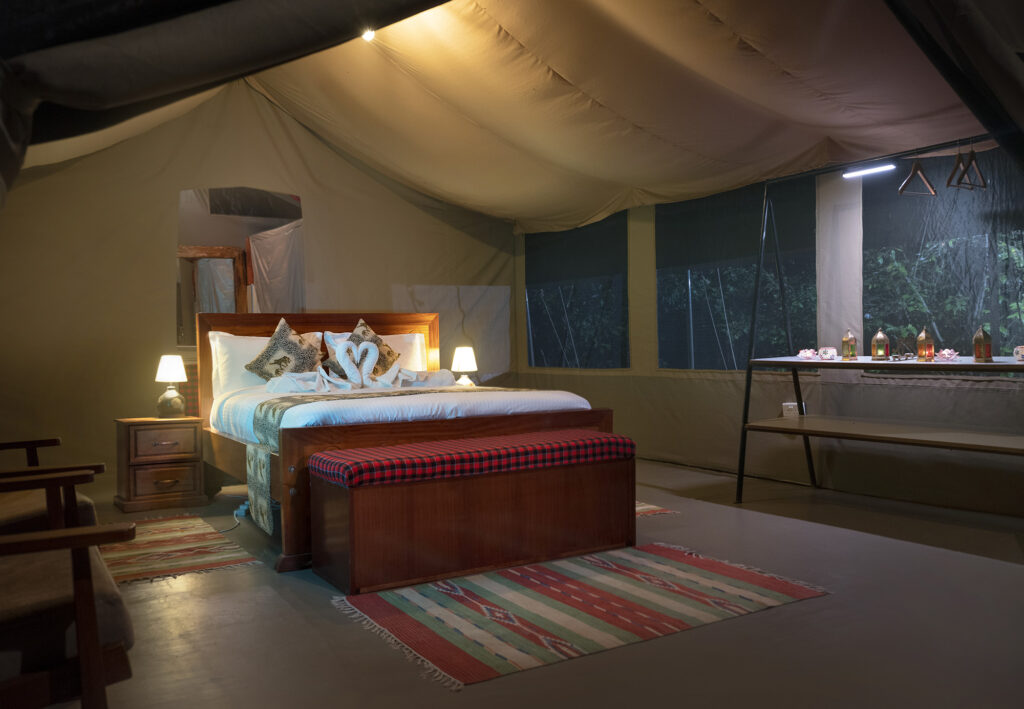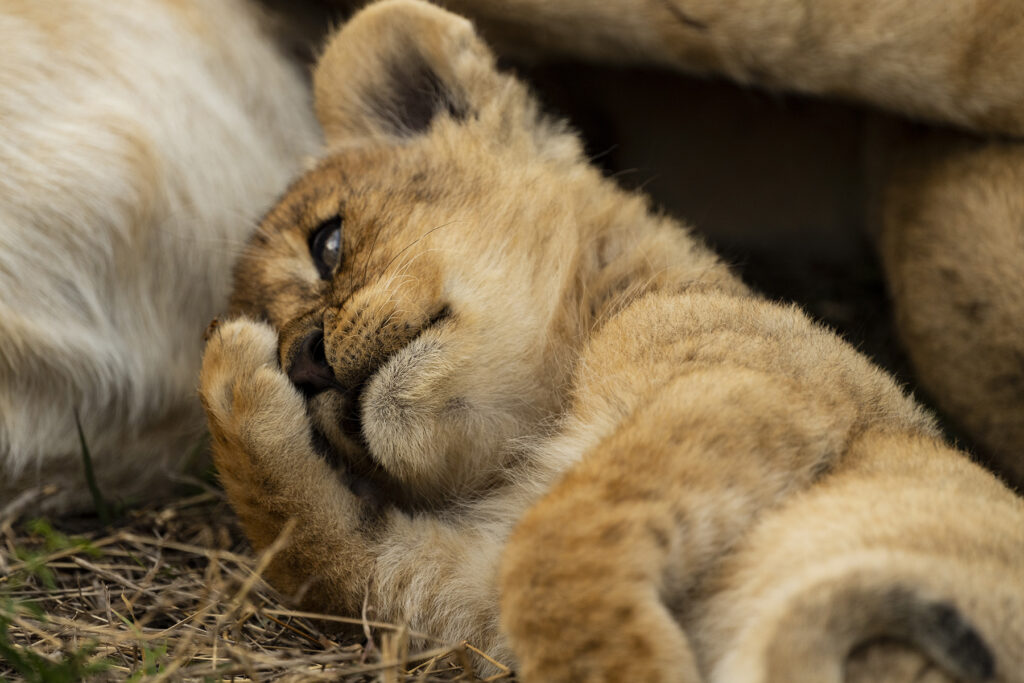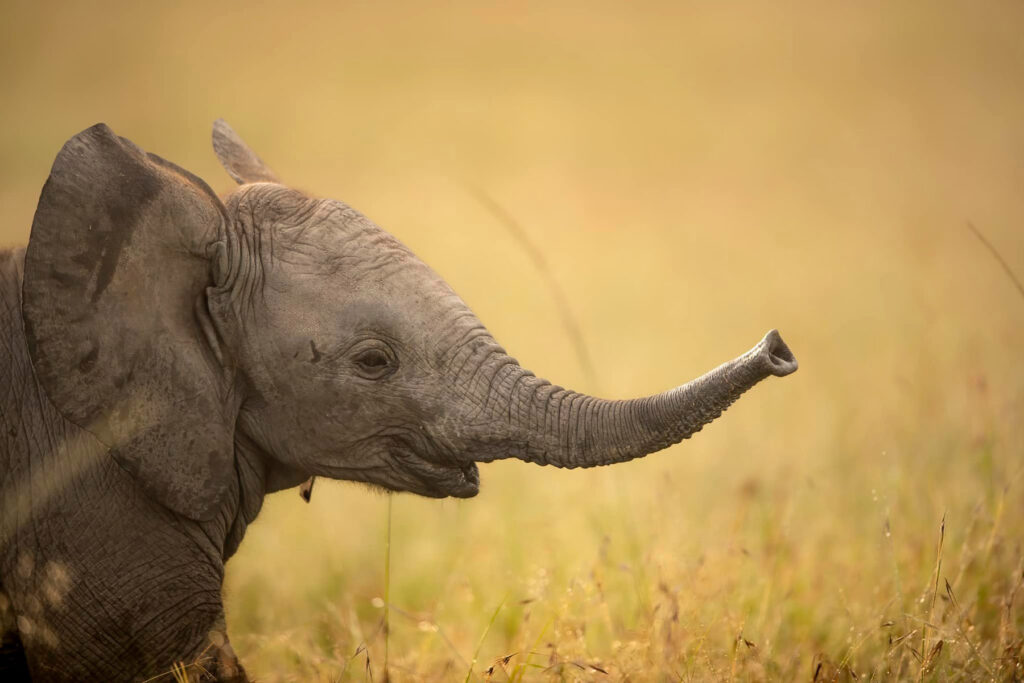Planning
All About The Masai Mara
The Masai Mara is a wild savannah region located in southwestern Kenya in East Africa. It’s renowned for the Masai Mara National Reserve, a protected conservation area that allows endangered species to thrive. Take in the beauty of the plains and rolling hills. Feel your adrenaline spike when you see fierce wildlife in their natural domain. Treasure the memories you build during your stay. The Masai Mara is a one-of-a-kind location. You’ve never seen anything like this before.
ALL ABOUT THE MASAI MARA
The Landscape
Grasslands: The Masai Mara is synonymous with vast, rolling grasslands. They stretch as far as the eye can see and provide essential grazing grounds. Wildebeest, zebras, and gazelles travel here and give birth during calving season. The grasses sway gently in the breeze, providing coverage from predators.
Savannas: Beyond the grasslands, the Mara boasts expansive savannas dotted with acacia trees. These iconic flat-topped trees serve as both shelter and sustenance. Lions, cheetahs, and hyenas prowl these open spaces. Their coats blend seamlessly with the landscape, especially during the dry season.
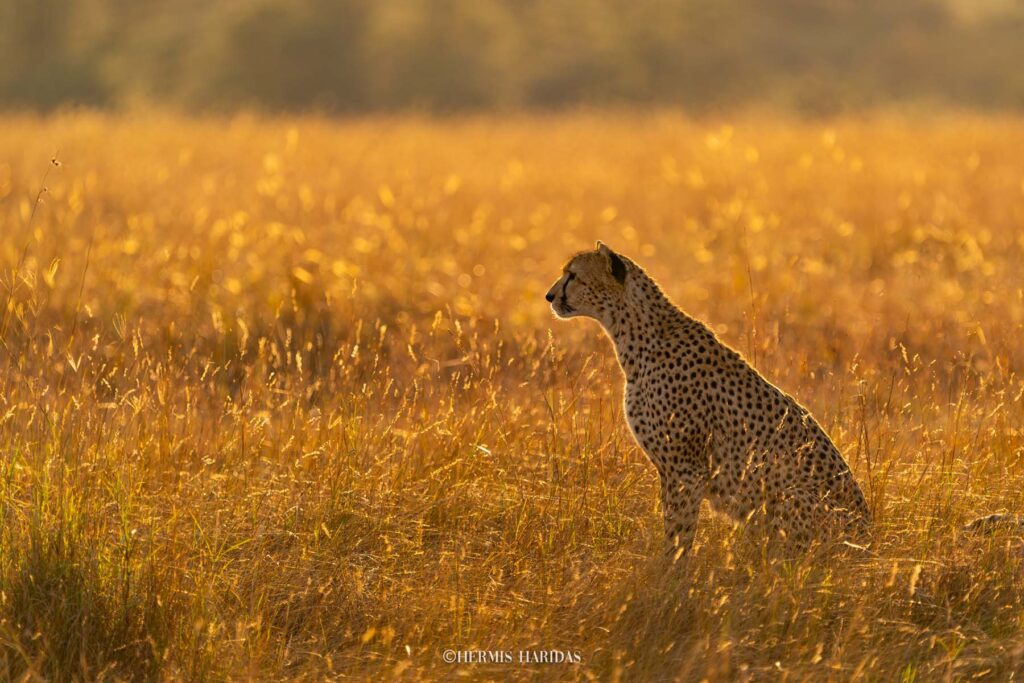
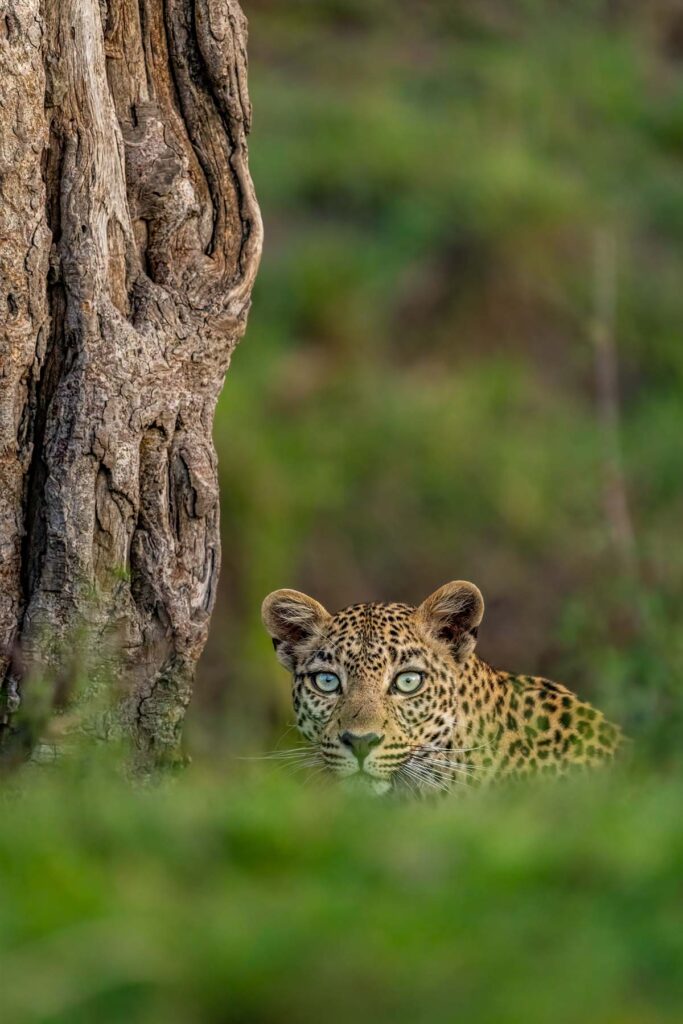
ALL ABOUT THE MASAI MARA
The Landscape
Riverine Forests: Along the winding course of the Mara River, pockets of lush riverine forests emerge. These verdant havens provide vital habitat for birds, monkeys, and other small mammals. The riverbanks teem with life. They’re particularly attractive to crocodiles, hippos, and thirsty herbivores during the dry season. The dense foliage offers a stark contrast to the surrounding grassy plains.
Rivers: Two major rivers wind through the Masai Mara National Reserve. The Mara River is the most well known, of course. The Talek River is the second major waterway in the reserve. There are several other smaller rivers and streams in this sanctuary. Each one supports the surrounding diverse ecosystem.
ALL ABOUT THE MASAI MARA
The Wildlife
The Big Five: The Masai Mara is home to the iconic Big Five: lions, elephants, leopards, buffaloes, and rhinos. Lions roam the grasslands in prides and are often spotted lazing under acacia trees. Elephants move through the plains foraging for food and nurturing their young. Leopards, elusive and solitary, rest in trees during the day and descend at night to hunt. Buffaloes move in large herds, using their formidable horns to deter predators. The endangered black rhino is a rare sight, as very few remain due to poaching.
The Great Migration: One of the most awe-inspiring events on Earth. Over 1.5 million wildebeests, accompanied by thousands of zebras and gazelles, make their way from the Serengeti to the Masai Mara. They make this perilous journey each year in search of greener pastures. This movement involves dramatic river crossings where crocodiles lie in wait and predators lurk nearby. Witnessing this phenomenon is a bucket-list experience.
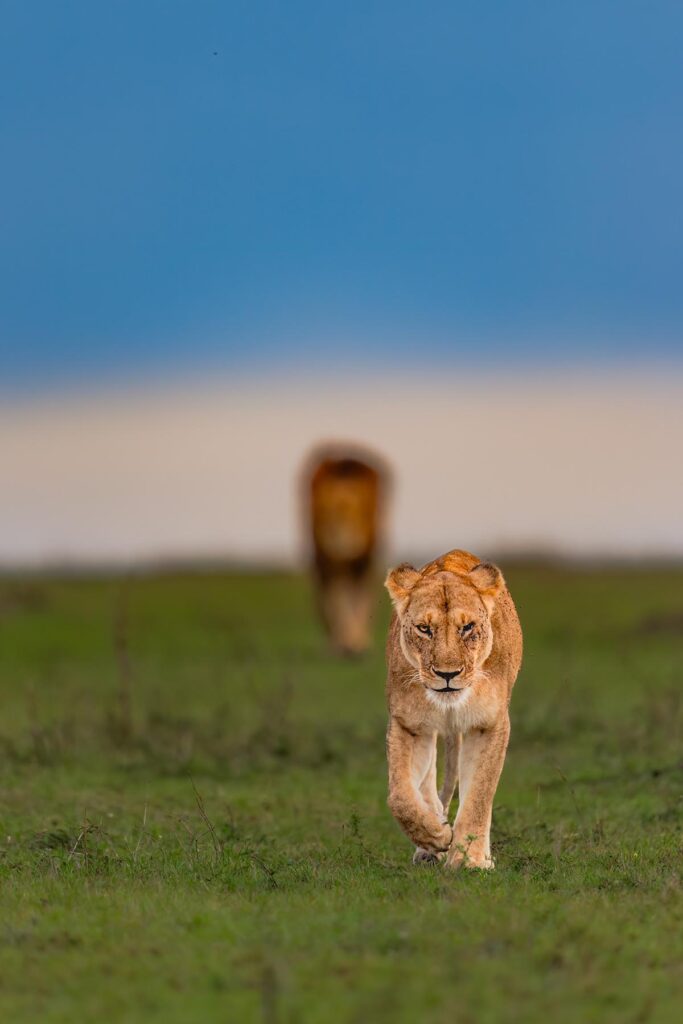
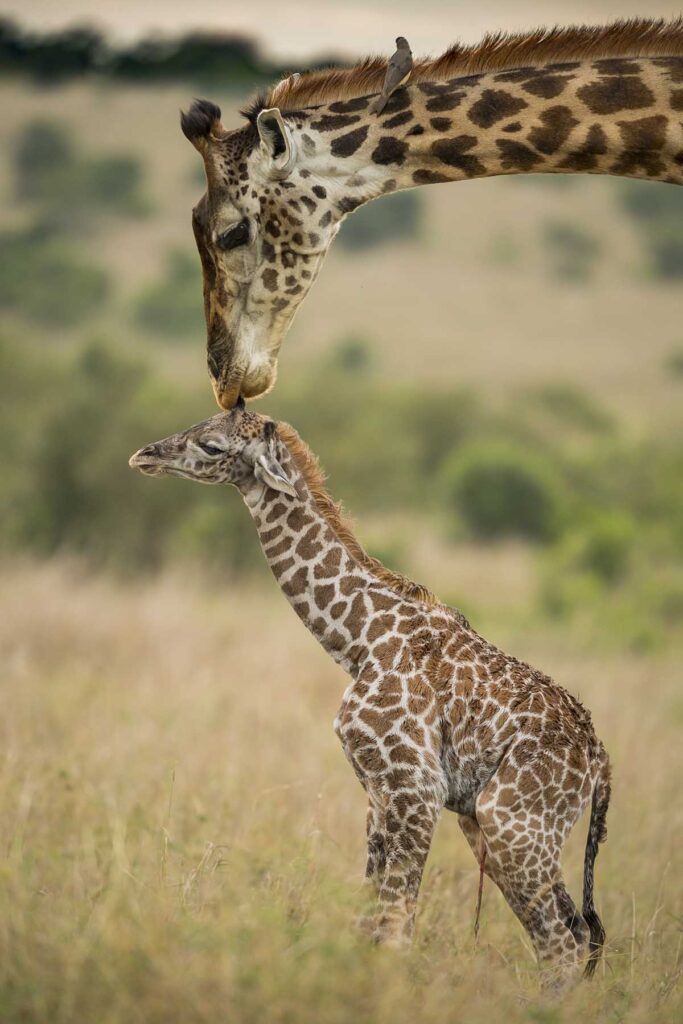
ALL ABOUT THE MASAI MARA
The Wildlife
Birdlife: The Masai Mara is a paradise for birdwatchers. There are over 450 bird species recorded across the national reserve. Most recognizable are the ostrich and the lilac-breasted roller. The diversity of other species range from showy egrets and storks to powerful eagles, falcons, and vultures. Birders may particularly appreciate the grey crowned crane, hornbills, and secretary bird sightings.
Herbivores: Beyond the wildebeests and zebras, the Masai Mara hosts a variety of herbivores. These including giraffes, elands, topis, and warthogs. They play crucial roles in maintaining the ecosystem. Their large numbers provide a reliable food source for larger predators. The exception is the Masai giraffe, which was recently declared endangered.
The first Masai Mara wildlife sanctuary was started in 1961. Over the years, that sanctuary expanded into the proud national reserve you see today. The park entry fees collected by the Narok County Council are used to improve conservation efforts in this iconic destination. By working together, the Masai Mara National Reserve can be preserved for the enjoyment of generations to come.

